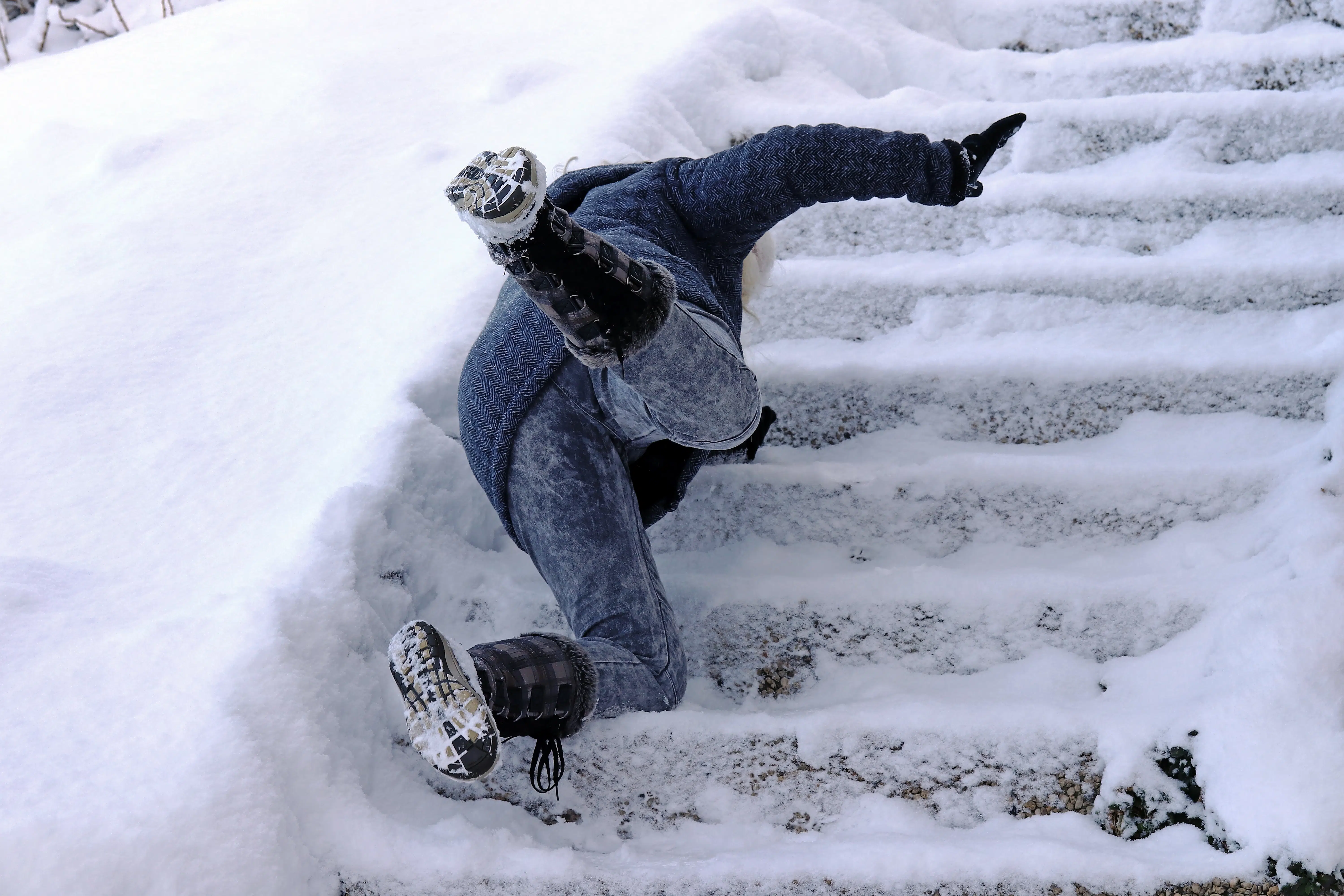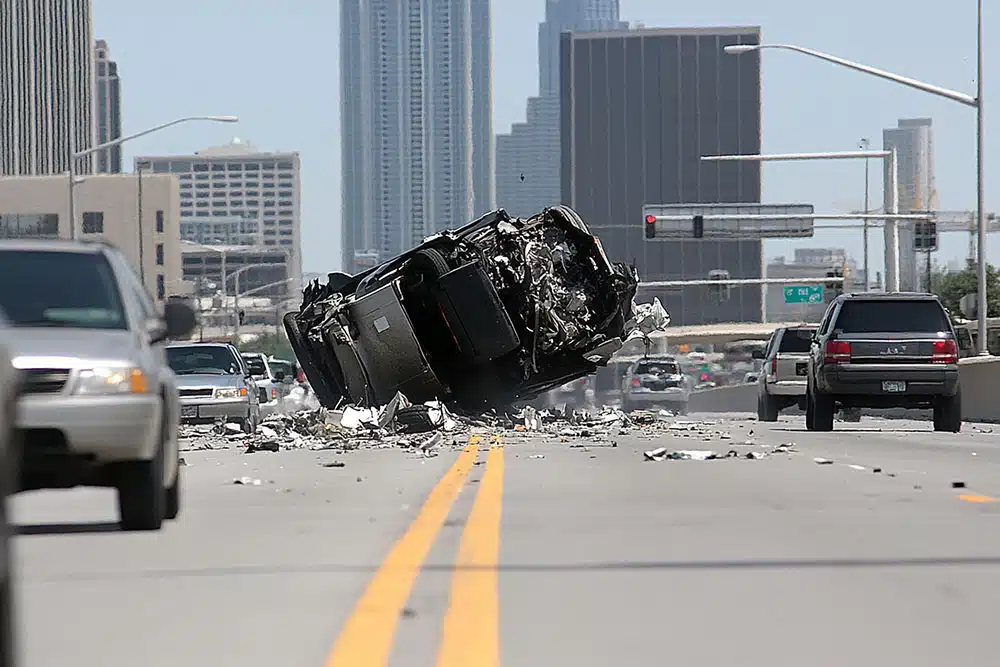
According to the National Floor Safety Institute, slips, trips, and falls account for over one million emergency room visits annually across the United States. If you sustained injuries on someone else’s property, you must prove the premise owner’s liability.
Wondering how you can demonstrate that the property owner caused your damages? This article will walk you through the essential components of proving a premises liability claim and inform you about your legal options.
The Rothenberg Law Firm can help you pursue justice and compensation if someone else’s negligence injured you or a loved one.
Contact us today at (800) 624-8888 for your free consultation and to discuss your case. Let us fight for your rights and help you achieve the justice you deserve.
What Is Premises Liability?
Premises liability is a legal principle that holds property owners accountable for injuries that occur on their property due to unsafe conditions. This type of liability applies to both private and public property owners, including businesses, landlords, and homeowners.
Unlike other personal injury claims, premises liability focuses on the property owner’s negligence in maintaining a safe environment.
Key Elements of a Premises Liability Claim
To successfully prove a premises liability case, you must establish:
- Duty of Care: The property owner had a legal obligation to ensure the safety of visitors on their premises.
- Breach of Duty: The property owner failed to maintain safe conditions or provide adequate warnings of hazards.
- Causation: The breach of duty directly caused your injury. You must demonstrate a clear link between the hazardous condition and the injury sustained.
- Damages: You suffered actual harm, such as medical expenses, lost wages, or pain and suffering, as a result of the injury.
Legal Status of the Injured Person
The legal status of the injured person plays a part in determining the property owner’s duty of care. There are three main categories:
- Invitees: Individuals invited onto the property for business purposes, such as customers in a store. Property owners owe the highest duty of care to invitees, which includes regular inspections and maintenance of the premises.
- Licensees: Social guests and others with permission to enter the property. Property owners must warn licensees of known hazards and maintain a reasonably safe environment.
- Trespassers: People who enter the property without permission. Property owners generally owe the least duty to trespassers, except in cases involving children or known frequent trespassing.
Proving Negligence
To establish negligence, you must demonstrate that the property owner failed to act as a reasonable person would under similar circumstances.
This involves showing:
- Failure to Maintain the Property: Evidence of poor maintenance, such as broken stairs, loose handrails, or unaddressed leaks.
- Inadequate Warnings: Lack of proper signage or warnings about potential hazards, such as wet floors or icy walkways.
- Negligent Security: Insufficient security measures leading to incidents like assaults or thefts on the property.
Gathering Evidence for Premises Liability Claims
Building a strong premises liability case requires comprehensive evidence to support your claim. The evidence must demonstrate the property owner’s negligence and the direct link between the hazardous condition and your injury. Here are the key types of evidence that can bolster your case:
1. Photographic and Video Evidence
Photographs and videos are powerful tools for illustrating the unsafe condition that caused your injury. They can capture:
- The Hazardous Condition: Images showing the exact hazard, such as broken stairs, wet floors, or exposed wires, help establish the property owner’s negligence.
- Lack of Warnings: Photos or videos showing no warning signs or barricades around dangerous areas can further demonstrate negligence.
2. Incident Reports
Incident reports are official documents that detail the accident. These reports can provide:
- Details of the Incident: Information about what happened, when it occurred, and any immediate actions taken by the property owner.
- Property Owner’s Acknowledgment: An incident report can indicate that the property owner was aware of the accident and the hazardous condition.
3. Witness Statements
Witnesses who saw the accident can provide valuable testimony about the hazardous condition and how it contributed to your injury. Collecting witness statements can strengthen your case by corroborating your account of the incident.
4. Maintenance and Repair Records
Maintenance and repair records can reveal whether the property owner took reasonable steps to ensure the premises’ safety.
These records might include:
- Evidence of Negligence: Records showing a lack of maintenance or delayed repairs can demonstrate the property owner’s failure to address known hazards.
- History of Hazards: Documentation of previous incidents or complaints about the same hazard can further establish negligence.
5. Expert Testimony
Expert witnesses can provide specialized insights and analysis to support your claim.
Types of experts your lawyer may hire include:
- Safety Experts: Professionals who can assess the property and identify safety violations or inadequacies.
- Medical Experts: Doctors who can testify about the nature and extent of your injuries and the treatment required.
6. Medical Records
Your medical records will prove the extent of your injuries and their impact on your life. They should include:
- Diagnosis and Treatment: Documentation of your injuries, medical procedures, and rehabilitation efforts.
- Impact on Daily Life: Evidence of how the injury has affected your ability to work or engage in daily activities.
7. Weather Reports (for Slip and Fall Cases)
In cases involving weather-related hazards, such as ice or snow, weather reports can help establish the property owner’s negligence. These reports demonstrate whether the owner took reasonable steps to address the hazardous conditions.
Seeking Compensation in Premises Liability Cases
Once you’ve gathered the necessary evidence to support your premises liability claim, the next step is seeking compensation for the damages you’ve suffered. This compensation can help cover the financial burdens resulting from the injury and provide some relief for non-economic damages such as pain and suffering.
Types of Compensation Available
In a premises liability case, you may be entitled to several types of compensation, including:
- Medical Expenses
- Current Medical Bills: Coverage for hospital stays, surgeries, medications, and other immediate medical costs.
- Future Medical Expenses: Estimates for ongoing medical treatment, rehabilitation, and necessary medical equipment.
- Lost Wages
- Past Lost Income: Compensation for wages lost during the time you were unable to work due to your injury.
- Future Lost Earnings: If the injury impacts your ability to work in the future, you may be entitled to compensation for the loss of earning potential.
- Pain and Suffering
- Physical Pain: Compensation for the physical pain endured due to the injury.
- Emotional Distress: Coverage for the psychological impact of the injury, including anxiety, depression, and loss of enjoyment of life.
- Disability and Disfigurement
- Permanent Disability: Compensation for long-term or permanent disability resulting from the injury.
- Scarring and Disfigurement: Damages awarded for permanent scarring or disfigurement.
- Loss of Consortium
- Compensation for the impact of the injury on your relationship with your spouse or family, including loss of companionship or support.
Differences Between Filing an Insurance Claim and Pursuing a Lawsuit
When you suffer injuries on someone else’s property, you have two primary avenues for seeking compensation: filing an insurance claim and if that is unsuccessful, filing a lawsuit. Here’s an overview of each approach:
Filing an Insurance Claim
What It Involves:
- Insurance Coverage: Filing an insurance claim involves seeking compensation from the property owner’s insurance policy. Depending on the property’s nature, this could be a homeowners’ insurance policy, commercial liability insurance, or renters’ insurance.
- Settlement Negotiation: The process typically involves negotiating a settlement with the insurance company. This means presenting evidence of the property owner’s negligence and demonstrating the extent of your damages.
- Documentation: You must submit documentation supporting your claim, such as medical bills, repair estimates, and proof of lost wages. The insurance adjuster will review these documents to determine the claim’s validity.
Advantages:
- Faster Resolution: Insurance claim settlements often result in quicker resolutions than lawsuits, allowing you to receive compensation more promptly.
- Less Formal: The claims process is generally less formal and stressful than going through a lawsuit.
- Cost-Effective: Filing an insurance claim is typically less expensive, as it doesn’t involve court fees and prolonged legal expenses.
Disadvantages:
- Limited Compensation: Insurance companies may offer lower settlements than what you might obtain through a lawsuit, as their goal is to minimize payouts.
- Negotiation Challenges: You may face resistance from the insurance company, which could deny the claim or offer a settlement that doesn’t fully cover your losses.
Filing a Lawsuit
What It Involves:
- Legal Action: Pursuing a lawsuit involves taking legal action against the property owner in court. This process requires filing a formal complaint and going through discovery, pre-trial procedures, and possibly a trial.
- Trial Preparation: Your legal team will gather evidence, interview witnesses, and build a strong case to present in court.
Advantages:
- Potential for Higher Compensation: Lawsuits can result in higher compensation, as a jury may award damages that exceed what the insurance company would offer.
- Leverage in Negotiations: The threat of a lawsuit can sometimes encourage insurance companies to offer better settlements to avoid going to trial.
- Full Range of Damages: Lawsuits allow you to pursue a broader range of damages, including punitive damages in cases of gross negligence.
Disadvantages:
- Lengthy Process: Lawsuits often take longer to resolve than insurance claims, as they involve more complex legal procedures.
- Higher Costs: Legal fees, court costs, and expert witness expenses can make lawsuits more costly than just filing an insurance claim.
- Uncertainty: The outcome of a lawsuit is less predictable, as it depends on the evidence presented and the jury’s decision.
Deciding Between a Claim and a Lawsuit
Deciding whether to only file an insurance claim or pursue a lawsuit depends on the severity of your injuries, the evidence available, and the insurance company’s response.
Here are some considerations:
- Severity of Injury: If your injuries are severe and result in significant financial losses, a lawsuit may be more appropriate to seek full compensation.
- Insurance Response: If the insurance company denies your claim or offers an inadequate settlement, pursuing a lawsuit may be necessary to achieve a fair outcome.
- Evidence Strength: The strength of your evidence can influence your decision. Strong evidence of negligence may improve your chances of success in court.
Ultimately, consulting with a premises liability lawyer will help you evaluate your options and determine the best course of action for your specific situation.
How We Can Help
We understand the complexities of premises liability cases and are committed to providing you with the best possible legal representation.
Here’s how we will assist you in your journey to justice:
- Comprehensive Case Evaluation: We will thoroughly assess the details of your case to determine the best legal strategy. Our team will explain your rights and options clearly, ensuring you understand every aspect of your case.
- Expert Evidence Gathering: Our attorneys will gather crucial evidence, including photos, witness statements, and expert testimonies, to build a strong case.
- Negotiation with Insurance Companies: We handle all communications with insurance companies, negotiating for a fair settlement that covers all your damages. Our team has extensive experience in dealing with insurance adjusters and knows how to counter lowball offers.
- Aggressive Trial Representation: If we cannot reach a fair settlement, we can take your case to court and advocate fiercely on your behalf.
- Personalized Client Support: We provide compassionate and personalized support throughout the legal process, keeping you informed every step of the way.
- Maximizing Compensation: We strive to secure the maximum compensation possible, covering medical expenses, lost wages, pain and suffering, and other damages.
Get the Compensation You Deserve with The Rothenberg Law Firm
Whether you file an insurance claim or eventually a lawsuit, our team at The Rothenberg Law Firm has the expertise and dedication needed to fight for your rights and ensure that you receive maximum compensation for your injuries.
Don’t let negligence go unchallenged. Contact The Rothenberg Law Firm today at (800) 624-8888 for a free consultation and let our experienced attorneys help you achieve justice and hold the responsible parties accountable. Take the first step toward reclaiming your life and securing the compensation you deserve.



